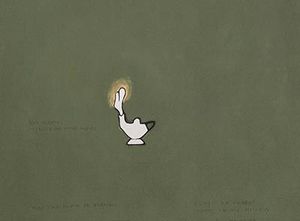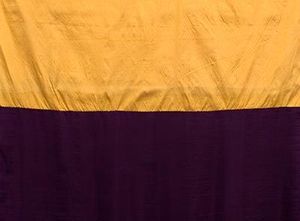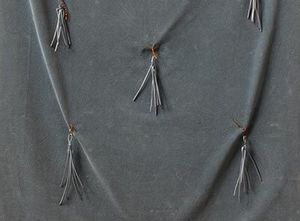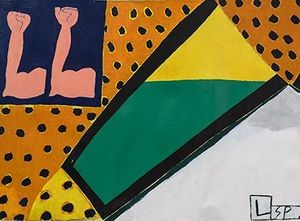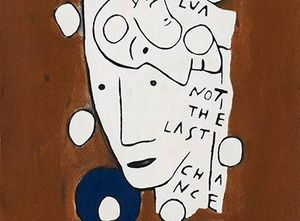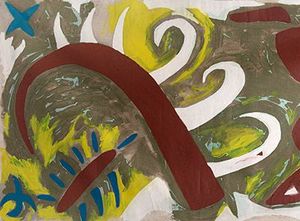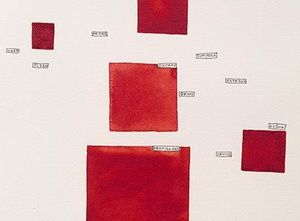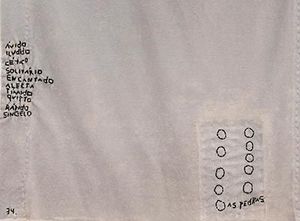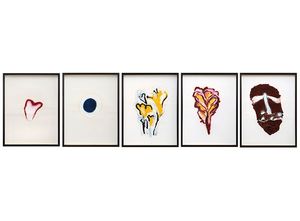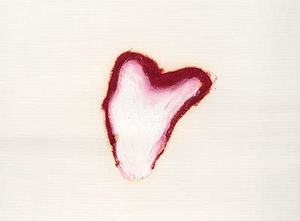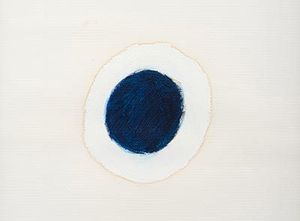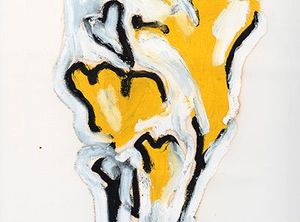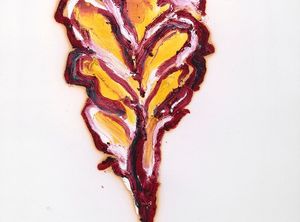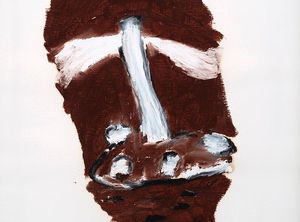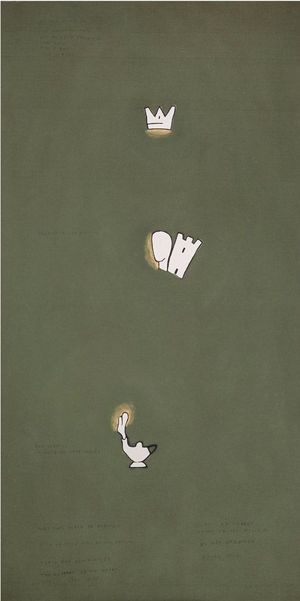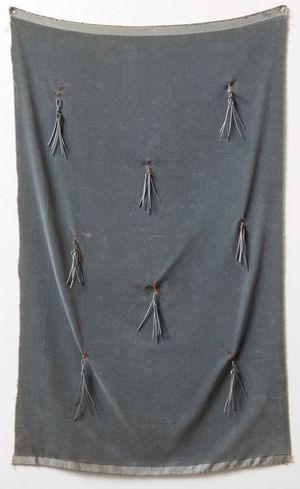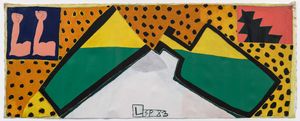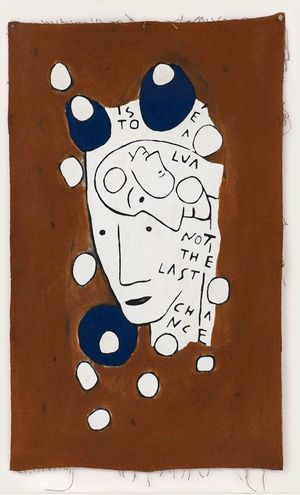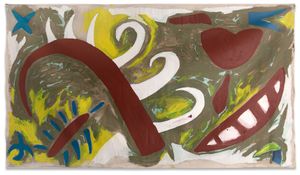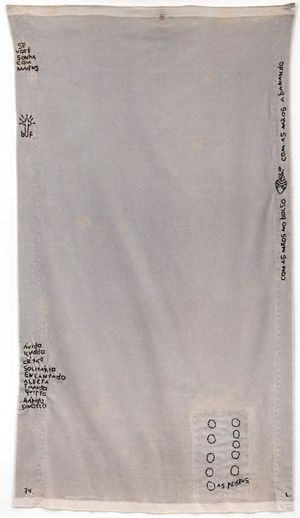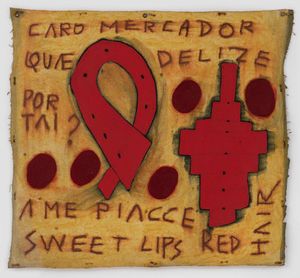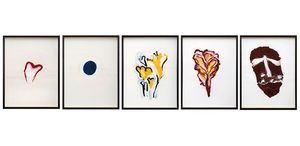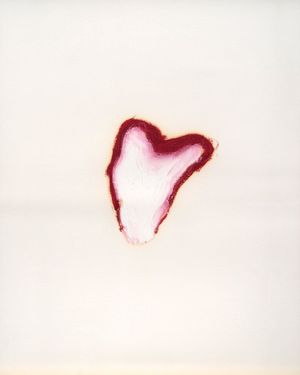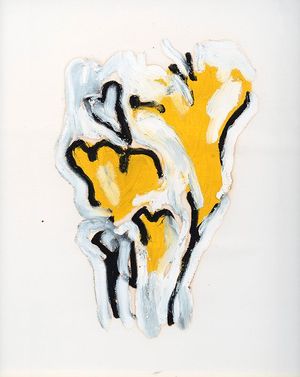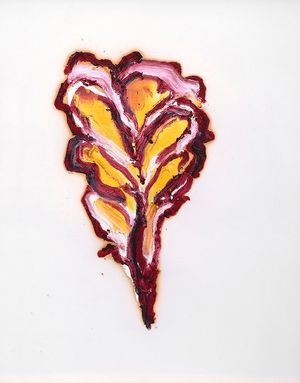José Leonilson's production is mainly concentrated in the last ten years of his life, a period in which he created a large and consistent body of work. His work encompasses painting, drawing, illustration, embroidery, installation and sculpture. In an exercise in synthesis, with each new phase Leonilson deliberately restricted his universe of signs. He developed his own vocabulary, in which aspects of eroticism and sexuality were central. Recent readings of his production have highlighted the not only affective and intimate, but also political meaning of Leonilson's aesthetic choices.
An artist from Ceará who built his career in São Paulo, José Leonilson is considered one of the main names of the Geração 80 [1980s Generation], a group of artists linked to the revival of painting and the introduction of an expressive, gestural and pop language. Marked by vigorous gestures and intense colors, Leonilson's early works instigated readings on the connection with the Italian Transavanguardia. Among the most significant influences were the work of Antonio Dias, Keith Haring's graffiti and Paul Klee's watercolors. This initial pictorial production, developed between 1983 and 1988, is characterized by a search for the "pleasure of painting", which is combined with freedom of gesture. His preferred support at that time was the large, unframed canvas.
At the end of the 1980s, Leonilson began to follow a path that led him to aesthetic choices very different from the first phase of his production. His work with words and cartographies of the body stands out, with a complex universe of references and graphic symbols. Among the systematically elaborated images are the atom, the tower, the heart, the staircase, the open book, the mountain, the volcano, the spiral, and others that are superimposed by the artist, such as fire and water, the compass and the clock, the hourglass and the mathematical symbol for infinity.
Leonilson's mature production reflects on the tenuous boundaries between what can be said and what is incommunicable, creating a diary that is both private and open. According to Lisette Lagnado, "Leonilson was driven by the compulsion to record his interiority in order to dedicate it to objects of desire".
From 1989 onwards, his work took on an even more intimate and delicate tone. At this point, the artist invested in new procedures, resorting to sewing and embroidery. The personal and autobiographical character is reinforced in works created from 1991 onwards, when Leonilson discovered he was living with HIV. With direct repercussions on his poetic language, the discovery of the disease led Leonilson to develop new metaphorical ways of expressing his own experience. The usually small size of the works from that period highlight the intimate and simple sense that moves Leonilson to express himself.
Leonilson's works are often metonymies of the artist's body, and face the dangers of exposure to the gaze of others. It is also common for him to play with references that confuse the viewer as to whether his works are true or fictional. According to Adriano Pedrosa, "Every word in Leo's vast and rich lexicon fights fiercely against dictionaryization".
José Leonilson's works are part of numerous public collections in Brazil and abroad, including: Centre Georges Pompidou, Paris; Tate Modern, London; Museu Serralves, Portugal; Museo Nacional de Bellas Artes, Buenos Aires; Museum of Modern Art, MoMa, New York; Städtische Galerie; Museu de Arte Moderna de São Paulo, São Paulo; Instituto Moreira Salles, Rio de Janeiro; Instituto Inhotim, Brumadinho; Museu de Arte Contemporânea da USP, São Paulo; Pinacoteca do Estado de São Paulo São Paulo; Museu de Arte de Brasília; and many others.


